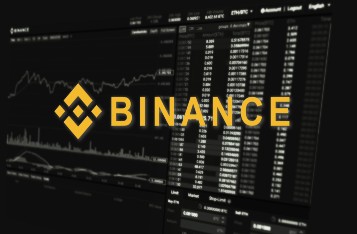Let’s break down the trends and ideas defining this year in crypto, so you can stay ahead of the curve.
The crypto world never stays still, and 2025 is no different. The days of small-scale experiments are behind us. Crypto is bigger, louder, and more intertwined with our daily lives. But what’s really shaping the conversations? What’s getting people excited — or worried?
Let’s break down the trends and ideas defining this year in crypto, so you can stay ahead of the curve.
 AI-Generated Image
AI-Generated Image1. Bitcoin Solidifies Its Place as Digital Gold
By 2025, Bitcoin has firmly taken its place as a store of value, often compared to gold but built for the digital age. Institutional adoption continues to rise, with major banks and funds incorporating BTC into their portfolios. Companies are adding Bitcoin to their reserves, cementing its role as a hedge against inflation and economic uncertainty.
With its fixed supply and growing adoption, Bitcoin isn’t just a financial experiment anymore — it’s a cornerstone of the new economy.
2. Central Bank Digital Currencies (CBDCs) Gain Ground
Governments worldwide are rolling out their own digital currencies, bringing blockchain into traditional finance. CBDCs are designed to make payments faster, more secure, and easier to trace.
But not everyone is thrilled. While CBDCs promise efficiency, they also spark debates around privacy and control. For crypto purists, the rise of CBDCs emphasizes the importance of decentralized assets like Bitcoin and Ethereum, where ownership remains firmly in the hands of users.
3. DeFi Becomes a Gateway for Everyday Users
Decentralized Finance (DeFi) has come a long way from being a niche corner of crypto. In 2025, platforms like Uniswap and Aave are household names for those seeking alternatives to traditional banking.
The focus has shifted toward accessibility — wallets and interfaces are now simple enough for newcomers to navigate. Lending, borrowing, and earning interest on DeFi platforms has become a gateway for millions looking to maximize their holdings without relying on centralized institutions.
4. NFTs Evolve Beyond Collectibles
The NFT boom of the early 2020s laid the foundation for something much bigger. In 2025, NFTs aren’t just about flashy artwork — they’re being used in gaming, music, ticketing, and even real estate.
For example, musicians are using NFTs to sell exclusive album access, while real estate companies tokenize property ownership to make investing more accessible. This evolution proves that NFTs are more than a trend — they’re a tool for innovation.
5. Layer 2 Solutions Unlock Blockchain’s Potential
High gas fees and slow transaction speeds? Those issues are becoming a thing of the past. Layer 2 scaling solutions like Arbitrum, Optimism, and zkSync have taken center stage, enabling faster, cheaper transactions on networks like Ethereum.
By offloading transactions from the main blockchain, these technologies improve usability without sacrificing security. This shift is opening the door for mainstream applications, from DeFi to gaming and beyond.
6. Tokenization of Real-World Assets (RWAs)
Crypto isn’t just about digital assets anymore. In 2025, tokenizing real-world assets — like real estate, fine art, and even commodities — is a booming trend.
Projects are bridging the gap between the physical and digital worlds, allowing fractional ownership of assets that were once out of reach for everyday investors. This democratization of investment opportunities is making blockchain tech even more valuable.
7. Regulatory Clarity Brings Confidence
After years of uncertainty, regulators in 2025 have finally established clearer rules for crypto. While not every rule is welcomed, the overall effect is a more stable market where investors feel safer.
Countries that embrace crypto-friendly policies are seeing innovation thrive, while others risk falling behind. For crypto projects and traders alike, regulatory clarity means fewer surprises — and more confidence in the long-term potential of the space.
8. Sustainability Takes Center Stage
Gone are the days when crypto was criticized for its environmental impact. By 2025, energy-efficient blockchains will be setting the standard, with Proof-of-Stake (PoS) networks leading the charge.
Projects that fail to address sustainability are struggling to compete, while eco-conscious coins like Ethereum (post-Merge) are thriving. This shift is helping crypto align with global efforts to reduce carbon footprints.
9. DAOs Redefine Governance
Decentralized Autonomous Organizations (DAOs) are becoming a powerful way to manage projects and communities. By 2025, DAOs are no longer experimental — they’re a proven model for decentralized decision-making.
From funding development to voting on project priorities, DAOs put power in the hands of their members. This approach has made them a favorite among developers and investors who value transparency and fairness.
10. Improved Security Boosts Trust
Scams and hacks were major issues in crypto’s early days, but 2025 is a different story. Wallets are safer, exchanges are more secure, and blockchains themselves are constantly improving.
Better education has also played a role — users are more aware of how to protect their assets, from using cold wallets to verifying platforms. This focus on security is helping build trust and attracting new participants to the space.
The Big Picture
Crypto in 2025 is more than just a speculative investment — it’s a technology transforming industries and lives. With clearer regulations, stronger infrastructure, and a growing ecosystem of real-world applications, the space is maturing into something sustainable and impactful.
Whether you’re trading, staking, or just watching from the sidelines, these narratives show that crypto is here to stay — and it’s only getting started.
The Top Crypto Narratives Shaping 2025 was originally published in The Capital on Medium, where people are continuing the conversation by highlighting and responding to this story.


 3 weeks ago
4
3 weeks ago
4 









 Bengali (Bangladesh) ·
Bengali (Bangladesh) ·  English (United States) ·
English (United States) ·